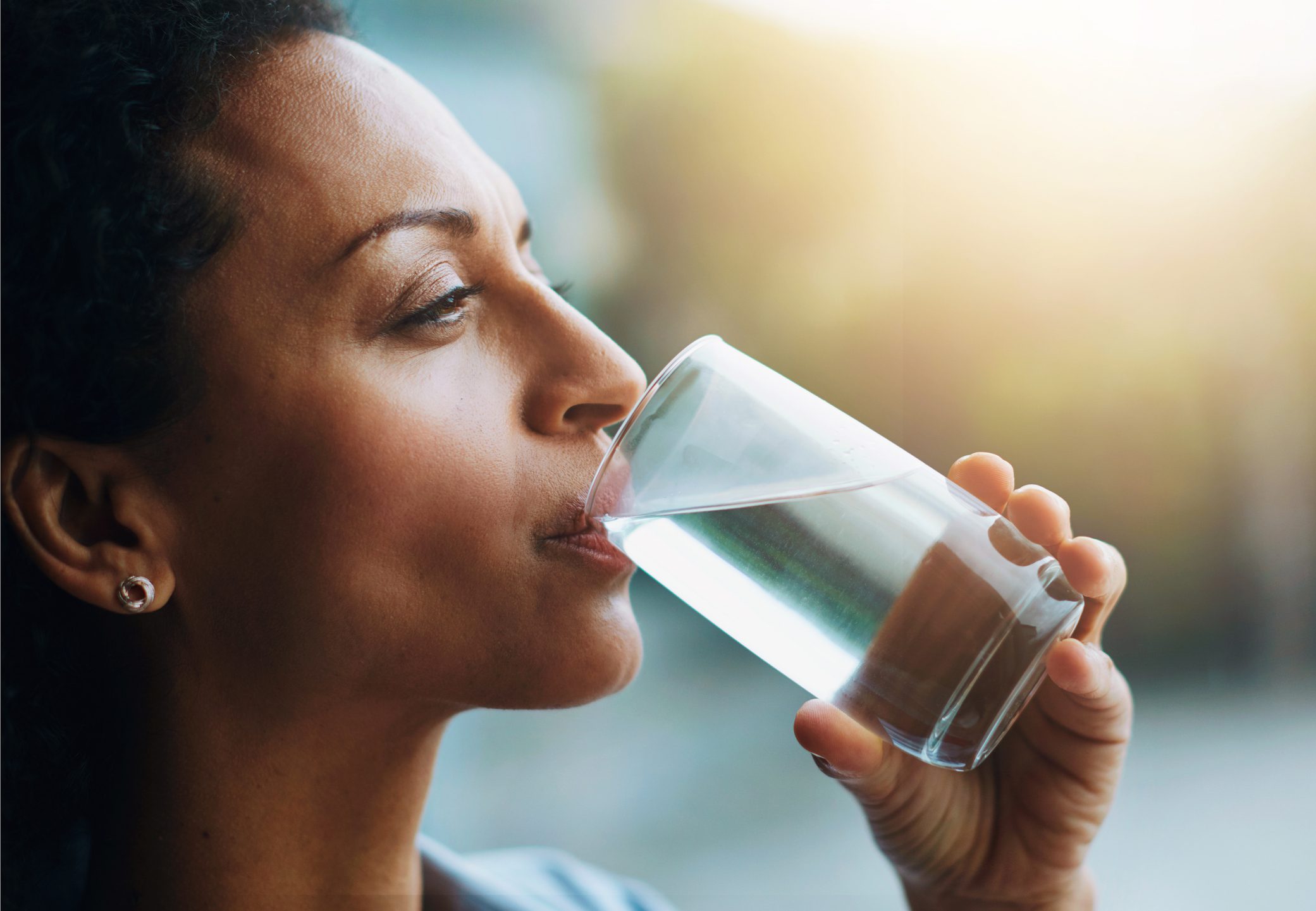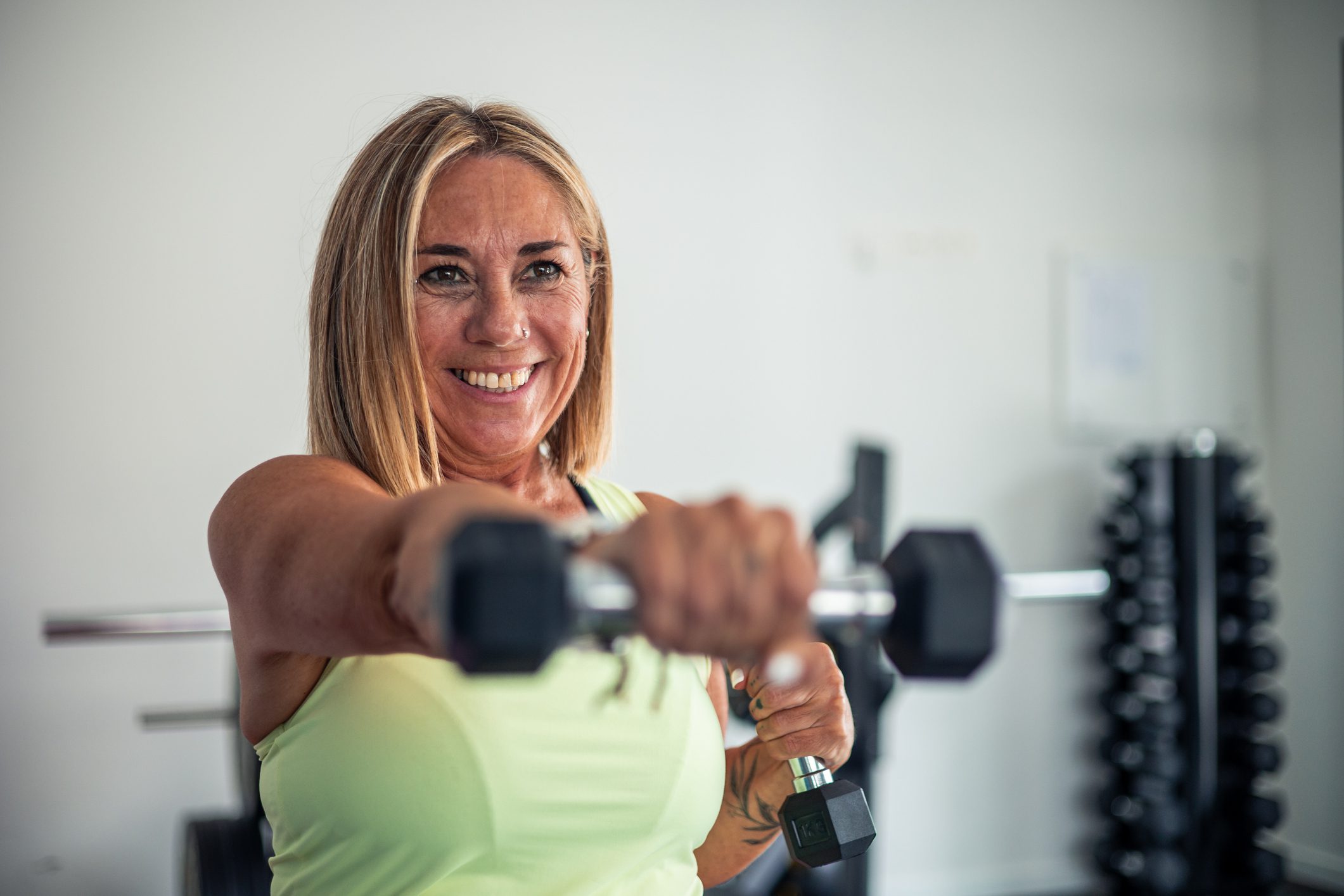
Published on Nov 20, 2023
Last modified on Jun 30, 2025
Calcium During Menopause: How Much Do We Really Need?
4 min read
Many of us grew up seeing “Got Milk?” ads pretty much everywhere — how could you miss that signature white mustache?
But is dairy actually the best source of calcium? And how much of this mineral do we even need during the menopausal transition to maintain strong bones? We’re digging in below…
Back to basics…what IS calcium?
Calcium is a mineral — the most abundant in the body! — that’s pretty much all stored in our bones and teeth. This is what gives them structure.
Our muscles need calcium to move, our nerves need it to carry messages from the brain, and our blood vessels need it to move blood throughout the body and release important hormones.
Benefits of calcium during perimenopause & menopause
🦴 Helps prevent bone loss
As we hit perimenopause, we’re at much higher risk for osteopenia (low bone mineral density, or BMD), which can progress to osteoporosis. And if you’re looking for a hormone to blame, it’s estrogen. It plays a powerful role in protecting our bones throughout our lives, so when levels decrease during the menopause transition, so too does bone density. In fact, in the 5-7 years after menopause, women are at risk of losing 20% of their bone density.
But we’re not entirely powerless here! There are things we can do to prevent osteoporosis, including focusing on weight-bearing/resistance exercises, making lifestyle adjustments (quit smoking, cut down on alcohol consumption, etc), and making sure you get adequate calcium…more on that below.
READ MORE: Elektra’s Full Guide To Osteoporosis
💅🏽Helps prevent brittle nails
Declining estrogen levels don’t just impact our bones — they mess with our nails, too. As do calcium deficiencies.
And this symptom is actually more common than you might expect. According to the American Academy of Dermatology, dry, brittle nails make up about 10% of all dermatologic conditions and affect an especially high number of older adults.
READ MORE: Elektra’s Full Guide To Brittle Nails
How much calcium we should be getting during menopause
The Recommended Daily Allowance (RDA) for adults is 1,000 – 1,200 mg of calcium daily:
- 1,000 mg for women between the ages of 19-50 (goes up to 1,300 if pregnant or breastfeeding)
- 1,200 for women between the ages of 51 – 70+
Important: although rare, there IS such a thing as too much calcium. Called hypercalcemia, it can affect the heart, lead to kidney stones, and actually weaken bones. So be sure to read supplement labels carefully and, if possible, prioritize getting calcium from natural foods.
Foods that are high in calcium
You don’t have to load up on all-daily-everything to get enough calcium. Here are a handful of calcium-rich foods across several categories: produce, seafood, dairy, and fortified foods.
🥬 Produce
- 1 cup cooked collard greens: 266 mg
- 1 cup cooked broccoli rabe: 100 mg
- 1 cup cooked kale: 179 mg
- 1 cup cooked soybeans: 175 mg
- 1 cup cooked bok choy: 160 mg
- 2 dried figs: 65 mg
- 1 cup fresh, cooked broccoli: 60 mg
- 1 whole orange: 55 mg
🐟 Seafood
- 3 oz canned sardines with bones: 325 mg
- 3 oz canned salmon with bones: 180 mg
🥛 Dairy products
- 6 oz plain, low-fat yogurt: 310 mg
- 1 oz part-skim mozzarella cheese: 210 mg
- 4 oz 2% cottage cheese: 105 mg
🥣 Fortified foods
- 8 oz fortified almond/rice/soy milk: 300 mg
- 8 oz fortified orange juice: 300 mg
- 8 oz fortified cereal: 100 – 1,000 mg
Best way to take calcium
It’s best to prioritize calcium from food sources. But for those who don’t get enough, supplementation is an option.
There are two types of supplements to choose from: calcium carbonate and calcium citrate.
Calcium carbonate
- Typically cheaper
- Harder to absorb (may cause side effects like upset stomach or constipation), so it has to be taken with a meal
Calcium citrate
- More expensive
- Doesn’t need to be taken with food.
A few things to keep in mind:
- Remember, the RDA is 1,000 – 1,200 mg per day, so depending on your regular diet, you may only need to supplement part of that (if at all).
- Calcium — whether from food or supplements — is best absorbed in small amounts (~500 mg), so try to spread out calcium intake throughout the day.
- Vitamin D has also been shown to help your body absorb calcium, so supplementing your dietary calcium intake with vitamin D-rich foods such as salmon, tuna, mackerel, egg yolks or fortified milk (dairy or non-dairy) can seriously boost mineral absorption. General adult dosing guidelines for vitamin D3 supplementation vary and range from 800 IU – 2,000 IU daily. If you have a known vitamin D deficiency, your provider will likely recommend a higher dose. It’s best to talk to a provider about what dose is best for you.
- To ensure our bodies are able to absorb the calcium, it’s important to keep an eye on alcohol intake, which interferes with the pancreas’ ability to absorb both calcium and vitamin D. As we know, alcohol also affects the liver, which is instrumental in activating our stores of vitamin D to facilitate calcium absorption.
READ MORE: Elektra Guide to Supplements for Menopause
How to test calcium levels in bones
Screening for osteoporosis is done via a bone density test, otherwise known as a DEXA scan.
The 30-minute exam, which can be ordered by a gynecologist or primary healthcare provider, is painless and involves no injections or special preparation (besides abstaining from calcium supplements for 24 hours prior). It uses minimal radiation to measure how much calcium you have in your bones — primarily hips and lower spine/back, and occasionally the forearm.
Higher bone mineral content means denser bones…which is what we want since dense bones are stronger and less likely to break.
Doctors may also leverage the Fracture Prediction Tool (aka FRAX), which is a calculator that measures the risk of fractures over the next ten years. According to the recommendations of the National Osteoporosis Foundation, if test results are greater than or equal to 3% for a hip fracture, or 20% for any osteoporotic fracture, you are considered eligible to receive osteoporosis treatment.
READ MORE: Is There A Test For Bone Health? Should I Be Getting It?
Frequently asked questions
I’m not sure I’m getting enough calcium…should I consider hormone therapy?
Because menopause is a big (if not THE biggest) risk factor for postmenopausal osteoporosis, hormone therapy — formerly known as hormone replacement therapy — can be a powerful preventative tool. Once diagnosed, however, estrogen therapy is not recommended as a first-line treatment. Read more >>
I’m getting the right amount of calcium and taking vitamin D supplements. Is there anything else I should be doing to support healthy bones or does that pretty much cover it?
GREAT JOB! You’re seriously decreasing your risk of osteoporosis by focusing on calcium and vitamin D intake. Regardless of where in the transition you are — whether you’re a perimenopausal or postmenopausal woman — there are a few additional things you can do to supercharge your bone (and overall) health:
- Get enough protein
In the U.S., the RDA for protein is 0.36 grams per pound of body weight for adults. Read more >> - Get enough magnesium
An ideal balance is two parts calcium to one part magnesium. So if, for example, your multivitamin has 1,000 mg of calcium, it should have 500 mg of magnesium. - Don’t forget about strength training
Strength training helps us maintain muscle mass (which we naturally lose), keeps our bones strong (which protects us from osteoporosis), and also helps with weight management and increasing our metabolic rate.
I heard there’s a link between calcium supplementation and risk of cardiovascular disease. What’s the deal there?
Back in 2010, a meta-analysis of 11 randomized controlled trials comparing the effects of calcium supplements versus placebo on osteoporosis and colon cancer found that more volunteers taking calcium had heart attacks or strokes than those on the placebo. The stat quoted in news stories was 30%, which totally sounds scary! But all that meant was that 5.5% of those taking placebo had a cardiovascular event, compared to 5.8% for those taking calcium.
The role that calcium plays in heart health is nothing new — we know that the plaque clogging arteries is composed primarily of calcium. But what we DON’T know is whether there’s a direct connection between the amount of calcium in the bloodstream and risk of cardiovascular disease.
The takeaway here is that if you’re focusing on maintaining healthy levels of calcium through food intake — with doctor-monitored use of calcium supplements IF needed — then you most likely don’t have anything to worry about. Although as always, everyone’s baseline levels and daily intake needs are different, so it’s best to consult with your healthcare provider first.
READ MORE:


